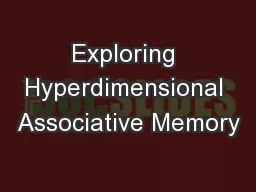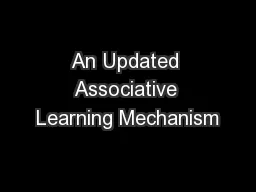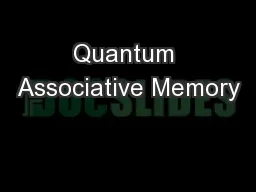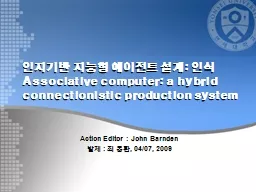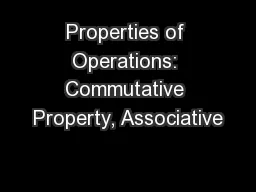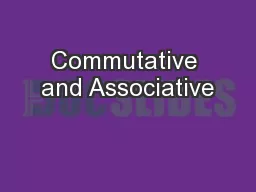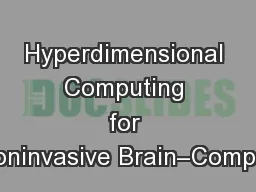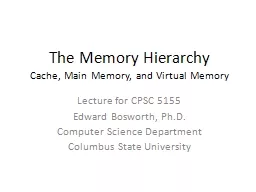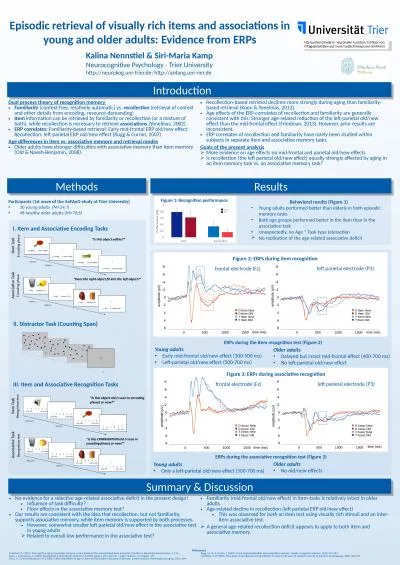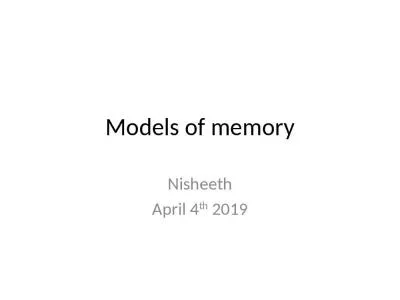PPT-Exploring Hyperdimensional Associative Memory
Author : liane-varnes | Published Date : 2017-10-11
Mohsen Imani Abbas Rahimi Deqian Kong Tajana Rosing and Jan M Rabaey CSE Department UC San Diego EECS Department UC Berkeley Outline Background in HD
Presentation Embed Code
Download Presentation
Download Presentation The PPT/PDF document "Exploring Hyperdimensional Associative M..." is the property of its rightful owner. Permission is granted to download and print the materials on this website for personal, non-commercial use only, and to display it on your personal computer provided you do not modify the materials and that you retain all copyright notices contained in the materials. By downloading content from our website, you accept the terms of this agreement.
Exploring Hyperdimensional Associative Memory: Transcript
Download Rules Of Document
"Exploring Hyperdimensional Associative Memory"The content belongs to its owner. You may download and print it for personal use, without modification, and keep all copyright notices. By downloading, you agree to these terms.
Related Documents

